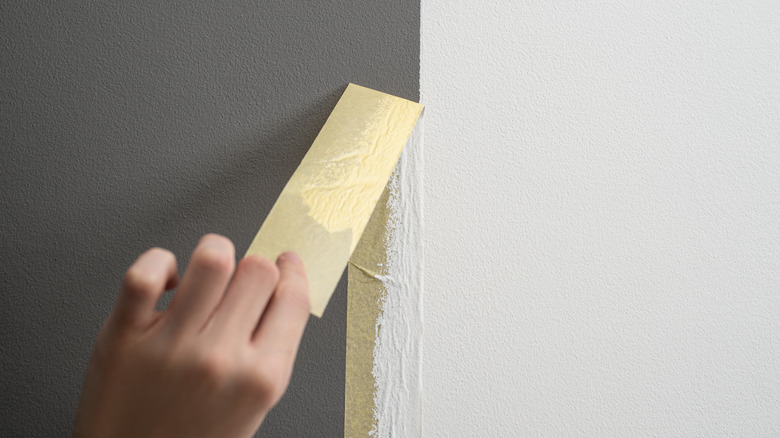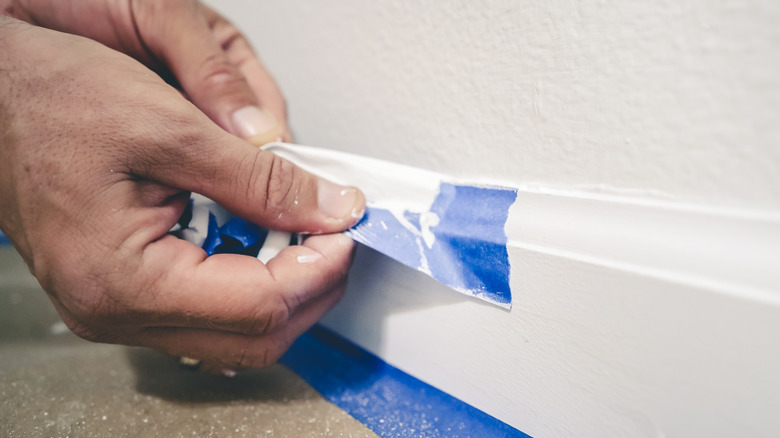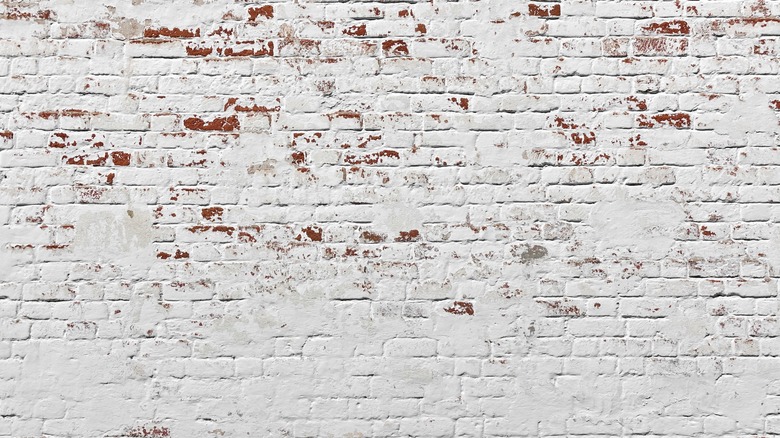How To Choose The Right Kind Of Painter's Tape
Choosing the correct painter's tape for your project can mean the difference between an oh-so-satisfying, crisp tape pull and an uneven mess, But with so many choices on the market, it can be challenging to narrow it down to the best option. Before embarking on your next home-improvement adventure, take some time to learn about the different varieties of painter's tape. Additionally, figure out what surfaces and projects they're best suited to ensure you have clean, professional-looking results.
According to D&D Painting, taping edges is the best method to keep your lines sharp when tending to a surface. Unless you're a professional, "cutting in" or using a small angled brush to paint edges can be messy and challenging. It may be time-consuming, but using tape can save you from unnecessary touchups and eyesores down the line, with the bonus of protecting your baseboards and built-ins from minor mishaps like drips and splatters.
The options on the market
According to Repaint Now, there are four main categories of tape used for painting projects: blue tape (the most common option), green tape, yellow tape, and masking tape. The main difference in each variety is the level of stickiness, a significant factor in determining the right fit for your job. The adhesive can peel up previous paint or fragile materials if it is too strong. Too weak, and it'll come unstuck, ultimately defeating the purpose of taping in the first place.
In most home-improvement situations, you'll be working with previously-painted drywall. Blue tape is your safest bet and likely the choice you're used to. It's a medium-adhesion product, giving you the protection you need to create sharp edges without causing damage. However, a higher-adhesion green tape is a way to go if you're working on your exteriors or rough surfaces. These surfaces can handle the stickiness and typically require a higher level of adhesion to help seal out any unwanted bleed-through.
Challenging surfaces
Sometimes home improvement projects leave you with unique surfaces like unpainted drywall or unfinished wood. Luckily, there's a type of tape to tackle any tricky issues. If you're working with something delicate or unfinished, like fresh drywall, wallpaper, or ceiling tiles, the low-adhesion yellow tape is the best option, per Find Tape. The lack of stickiness will keep you from accidentally ripping or peeling up any of the material and save you from bigger issues down the line.
Finally, there's masking tape, the light-colored roll found in art classrooms everywhere. If you're in a pinch or looking to save money, masking tape can do the job, but it's best for small projects because of its high adhesion, via Repaint Now. Determining the correct type of painter's tape for your project is the first step to ensuring flawless, mess-free results. Save yourself some time and invest in the best option for your project — your walls will thank you.


